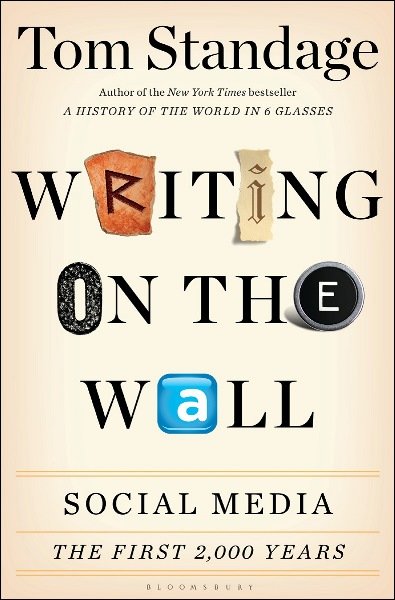Have you read what Aristotle wrote about internet trolls?
In On Trolling, he writes,
“that trolling is a shameful thing, and that no one of sense would accept to be called ‘troll’, all are agreed; but what trolling is, and how many its species are, and whether there is an excellence of the troll, is unclear…”
If you’ve ever sat through a philosophy class (ahem, Dr. Dougherty), that style likely sounds familiar. This is actually classics professor R. Barney “translating” for the rest of us. Read a summary of her apt insights here, or read the full version for free at the Journal of the American Philosophical Association.
Al Ghazali on Trolling
Journalist Sarah Kendzior notes that the 11th century philosopher al-Ghazali has thoughts on dealing with ignorant folks who endlessly question your ideas, as well. al-Ghazali sorts “the sickness of ignorance” into four types, from envy,
“and every time you answer him with the best or clearest or plainest answer, that only increases his rage and envy. And the way is not to attempt an answer.”
to stupidity, quoting Jesus as saying “Indeed I did not fail in bringing the dead to life, but I failed in curing the stupid.” (!! Not sure that’s completely biblical, but I appreciate the sentiment.)
Then there are folks who act like they know it all, but won’t stop to listen. Yet there’s also the guy who asks annoying questions in good faith,
“who is not overcome with envy and anger and the love of worldly vanities and wealth and honor, but is seeking the straight road.”
He can actually learn, al-Ghazali says, and so he’s worth answering. And as for the rest? Let ’em go…

Then there’s the rest of society, 2000 years ago:
So we’ve always had trolls… and it seems we’ve always had social media, as well. In Writing on the Wall, Tom Standage weaves together lively stories from European written history (sadly, nothing on verbal chatter nor the entire rest of the world.) His chapter on Rome has Cicero copying speeches and sending them off to get noticed by important people. There are early Christian bishops sending a flurry of letters and insults back and forth. Roman elites sent daily gossip across town by letter-carrier (or to Britain within five weeks). And as in today’s attention economy:
“[Roman] books circulated from one reader to the next through recommendation and copying. Authors did not make any money from their books and wanted as many people as possible to copy them. The best way to do this was to get copies of a book into the personal libraries of influential intellectuals… A well-stocked library would attract a steady stream of visitors, who might read and recopy the book…”
Finally, there were the town walls.
Roman houses turned inwards, so their solid outer walls were free game. Excavations of Pompeii provide charming tweets and posts like these, scrawled by passerby some 1900+ years ago:
- At Nuceria, I won 8,552 denarii by gaming—fair play!
- On April 20, I gave a cloak to be washed. On May 7, a headband. On May 8, two tunics.
- The man I am having dinner with is a barbarian.
- Atimetus got me pregnant.
And that’s just the daily status updates. You may also recognize the inspirational re-quotes, the sales attempts, and the attacks on your loved ones:
- Nobody is gallant unless he has loved
- Once you’ve tried Gabinius’s hotel you’ll stay there
- Samius to Cornelius: go hang yourself!
- Virgula to her friend Tertius: you are disgusting!
- Sarra, you are not being very nice, leaving me all alone like this.
- Lucius Istacidius, I regard as a stranger anyone who doesn’t invite me to dinner.
If you want more inappropriate Roman graffiti, there’s a handy list here. (Sounds like the thirsty Yik Yak app of 2000 years ago.)
…and myspace pages in the royal courts.
From there, Standage goes on to poetry books passed among young courtiers in Queen Elizabeth’s court. Perhaps your school friends did the same sort of written chatter in a yearbook, school notebook, or MySpace page. These Elizabethan quotes are just as moody and love-besotted as your favorite young adult today:
“O myserable sorow withowten cure / yf it plese the lord to haue me thus suffir / at lest let her know what I endure… / wher lyved my hope now ded foreer”

But social media was used for politics as well. Martin Luther’s friends used printing presses to make his pamphlets go viral, sparking a religious revolution in the 16th century. Coffeehouses later overflowed with scientific ideas, gossip, news, and crazy rants. (As you’d expect, Concerned Citizens worried that other people were stupid enough to be fooled). Given all these ballads, drinking songs, letters, and pamphlets, some 17th century librarian types started saving copies of everything. And other scholars wrote “bibliographies, summaries, and reviews” to handle and share that flow of new information.
Standage goes on through the American and French revolutions, the mass media, and the internet, but the early parts are what caught my attention. You can’t beat Roman wall graffiti.
On a more serious note, I find these tips on dealing with trolls a good reminder to just step away…. and the history of social chatter reminds us that this swirl of ideas and self-expression isn’t new.
Give people a wall, a piece of paper, a pencil–or an internet–and this is what you’ll get.



Dr Mike would be proud of you…I think! Excellent points. There really is “nothing new under the sun.” (Ecc 1:9)
Thanks for sharing! I love having a new and interesting blog to read. I think it’s both amusing and comforting to know that we humans have been annoying each other in this way since the dawn of time.